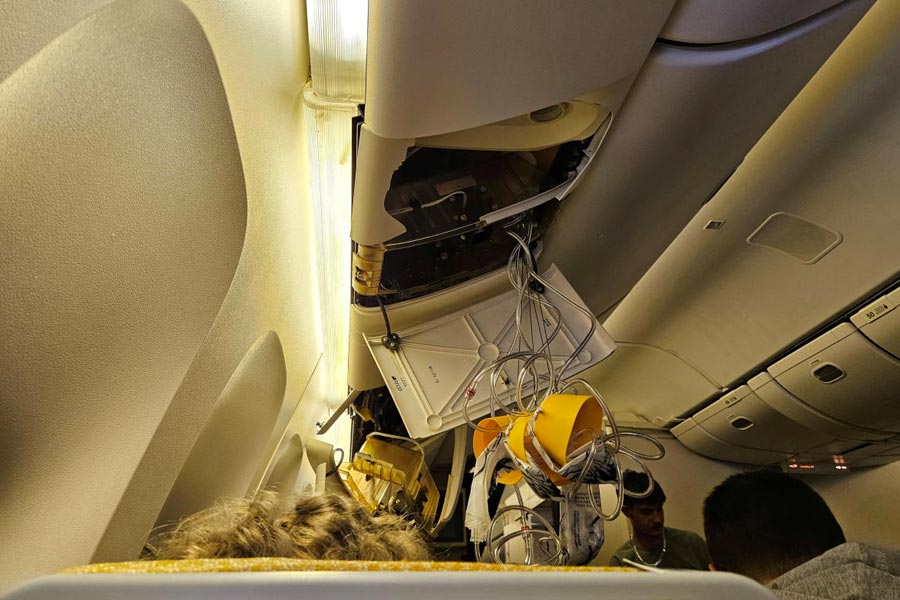The scene was a horrifying one: A man’s legs dangling from an overhead compartment bin meant for carry-on luggage and other passengers dragging him out and helping him back into his seat. Ceiling panels were ripped out and oxygen masks were also dangling.
This was the sight Tuesday onboard an Air Europa flight from Madrid to Montevideo, after it hit clear-air turbulence (CAT) over the Atlantic Ocean, plunging 1,600 feet in eight seconds. The man had been violently hurled upward by the plane's sudden fall. Another 30 passengers suffered cracked ribs and other broken bones along with bruises.
The dramatic scenes on board the Air Europa flight were a reminder of what happened in May aboard SQ 321, the Singapore Airlines flight that hit a very sharp CAT patch over Myanmar’s Irrawaddy Delta region. For 62 seconds, the aircraft bucked up and down from 37,400ft to 37,000ft and then descended even further creating negative G-forces that sent passengers who weren’t wearing their seatbelts shooting upwards out of their seats. One person died and dozens were injured, many seriously.
The recent incidents have underscored fears in the aviation industry that CAT incidents are likely to happen much more frequently with climate change and rising global temperatures. “Incidents of CAT are forecast to be increasing dramatically,” says veteran pilot Captain Shakti Lumba.
In May 2022, severe turbulence injured 14 passengers and three cabin crew members on a SpiceJet Mumbai-Durgapur flight. One of the injured passengers, Akbar Ansari, suffered a spinal fracture; his seatbelt broke in the turbulence, his brother was quoted as saying. Ansari, 48, died in October that year.
In 1980, an Indian Airlines flight experienced severe turbulence over Rampurhat in Bengal, killing two of the 132 people, according to PTI. And according to a Bloomberg report, flights to Tokyo, Milan and Chile -- the Delhi-Tokyo route included -- are among the bumpiest in the world.
Can clear air turbulence be predicted?
It’s almost impossible to predict where CAT is likely to strike. “There is no sign of it. It doesn’t leave any signature anywhere. Nobody can predict it. You can only infer it by looking at the conditions,” says Air Vice Marshal (retd) Gurpershad Sharma, who headed the Indian Air Force’s meteorological wing and who is now the president of Skymet Weather.
“It’s a freak weather phenomenon that can happen anywhere. These are all turbulent patches. They are not static but are dynamic in nature,” adds Sharma.
Pilots follow standard procedures after encountering CAT. They inform other planes in the region and report any incident to the nearest control tower.
How to prevent turbulence casualties
Veteran aviators say the only precaution passengers can take is to always stay buckled up even after the seatbelt signs have been turned off.
Singapore Airlines, for its part, has now decided to stop serving meals when the seatbelt sign is on and also not serve hot beverages. Crews are also required to be strapped in whenever the seatbelt sign is on.
Pilots say that CAT takes place more frequently over oceanic routes and have, so far, not happened very often over the Indian landmass. Since 2011 India is said to have reported only five CAT incidents. By contrast, the US had 132 incidents and Japan has had 27. Incidents have most frequently happened between 30 degrees and 45 degrees north and south of the equator.
The aviation industry and scientists have been working on developing LIDAR (light airborne laser radar) which can detect CAT. However, the current LIDAR systems are too large to be installed on board aircraft.












